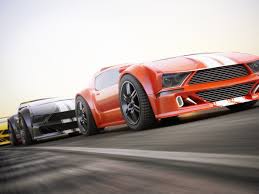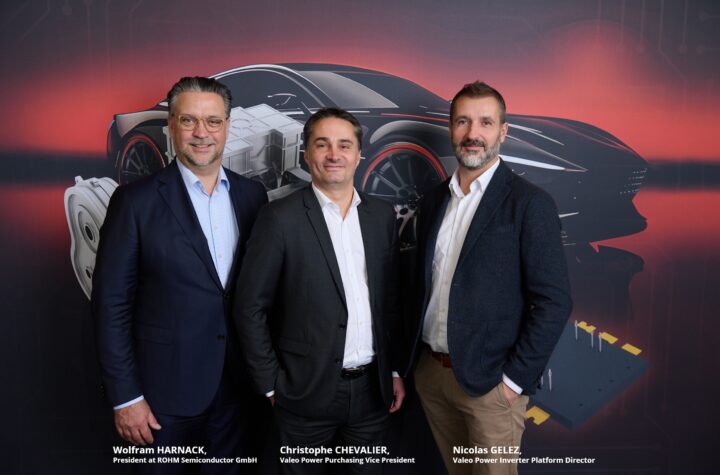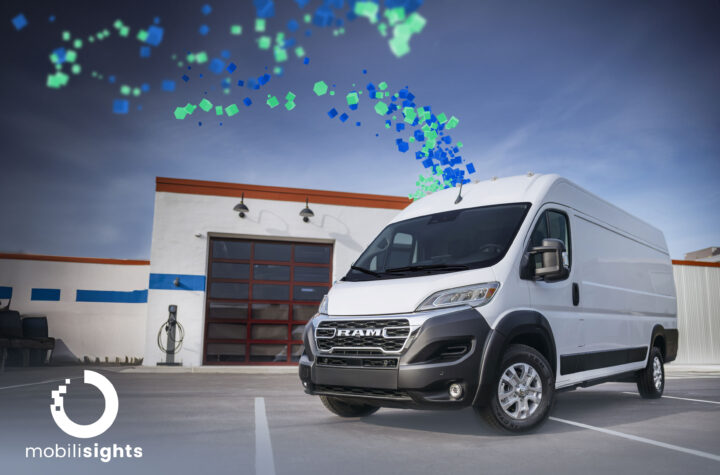
Leading automakers are finding that intelligent suspensions are a smart choice for enhancing vehicle dynamics and giving consumers the ability to customize their vehicle’s ride performance.
“CVSAe™ and other Monroe Intelligent Suspension technologies play vital roles in helping vehicle manufacturers provide a comfortable, secure and enjoyable driving experience in an extensive range of driving situations,” says Neville Rudd, senior vice president and general manager, DRiV Ride Control. “This CVSAe solution provides highly differentiated, satisfying ride performance for owners of more than 40 leading vehicle models.”
Monroe® Intelligent Suspension is DRiV’s portfolio of advanced electronic suspension technologies delivers adaptive and active suspension damping control and spans every passenger vehicle category. The portfolio includes a selective suspension solution (Dual Mode) targeting sporty vehicles, a semi-active suspension with a single external valve (CVSAe) for sports cars, sedans and SUVs.
DRIV: Chapter 1: What is Motion Sickness
For the high-performance sports cars and SUVs Monroe offers a light-weight CVSA2™ technology which uses two independent control valves. The company’s Kinetic® technology can be an add-on option to the CVSA2 technology to deliver improved roll and pitch control performance to both sports cars and SUVs in the high-premium segment.
Automotive Industries (AI) asked Henrik Johansson, Vice President and General Manager, DRiV™ Advanced Suspension Technologies how their electronic and hydraulic technology continuously adapts to changes in road surface.
Johansson: Several sensors mounted on the car chassis continuously measure changes in the driving situation and road conditions. The vehicle controller uses these signals to compute the optimal setting for each damper and sends signals to the active hydraulic valves to change the damping force level of each individual damper. This control cycle happens within milliseconds.
AI: What are the advantages of electronic shocks?
Johansson: Passive shocks have a fixed damping calibration, which is always a balanced compromise between comfort and vehicle handling. Monroe Intelligent Suspension electronic dampers offer a much wider range of adjustability and response to variable driving situations allowing to have more comfort and better vehicle control compared to passive shocks. This has been confirmed by independent test institutes by means of real-life tests using different vehicle types.
AI: What ride performance solutions are covered in your portfolio?
Johansson: DRiV offers one of the industry’s most extensive selections of ride performance solutions for automotive, commercial vehicle and other applications. Vehicle manufacturers rely on DRiV for passive dampers in the Monroe OE Solutions portfolio, as well as Monroe Intelligent Suspension electronic suspension technologies. The Monroe Intelligent Suspension portfolio includes the following solutions:
- Dual Mode features four electronically controlled dampers connected to an in-car switch that enables drivers to choose between two ride characteristics, usually a normal comfort-oriented drive mode for daily use and a second more sporty driving mode for track usage. Both damping characteristics are independently tune-able making this a very bespoke product in the market. Because the hydraulic control valve is located inside the damper, this product fits very well on smaller sports cars.
- CVSAe semi-active suspension offers a similar driving mode control as for Dual Mode but with the addition that the shock absorbers are continuously adjusting to changing driving and road conditions.
- CVSA2 semi-active suspension features four lightweight, independently adjustable dampers equipped with two hydro-electric valves that provide a much larger tuning range for higher levels of comfort and vehicle control as required for high-performance SUVs and super sports cars.
- CVSA2/Kinetic® semi-active suspension combines the benefits of CVSA2 technology with the Kinetic roll and pitch control system. This system is lighter in weight than suspensions requiring anti-roll bars and offers the lowest energy consumption in the active suspension domain.
AI: What is your highest-volume product to date?
Johansson: Monroe Intelligent Suspension CVSAe technology has been selected for more than 40 popular vehicle models. Vehicle brands offering this technology include Audi, BMW, Infiniti, Jaguar, Ford, Mercedes-Benz, Nissan, Range Rover, Seat, Skoda, Toyota, Volkswagen and Volvo.
AI: How does CVSAe technology let you switch between driving modes on demand to bring a more comfortable ride or a more adventurous ride experience?
Johansson: The control of the CVSAe dampers is typically integrated in the cars driving experience system. This system simultaneously controls different sub-systems like engine, transmission, steering and suspension to deliver a holistic driving experience. The driver can typically select between different driving experience modes. In the comfort mode the dampers will typically produce lower damping forces to create more road isolation and a plush feel. In the sports mode, the dampers will deliver higher damping force response to give the driver more road feedback and a more controlled feeling.
AI: How does your Kinetic roll control system eliminate the need for roll bars?
Johansson: The Kinetic technology hydraulically connects the four CVSA2 dampers. These hydraulic connections replace the heavier steel anti-roll bars as used on most cars. With the front-rear hydraulic link, the Kinetic system can also control the pitch of a vehicle. The Kinetic system has two main advantages compared to conventional anti-roll bars: first it removes the discomfort normally created by the friction induced by the conventional anti-roll bar and secondly it creates higher anti-roll forces to keep the car more stable during dynamic maneuvers. The CVSA2/Kinetic solution has weight and power consumption advantage over other systems that use semi-active dampers combined with active anti roll bars or fully active suspension systems.
DRIV Chapter 2: Research into Motion Sickness
AI: What solutions are you working on for future electric and autonomous vehicles?
Johansson: Our engineers are focused on several broad initiatives related to advanced vehicle motion control. One of these addresses what is perhaps the greatest barrier to autonomous driving – motion sickness. Our engineering team is collaborating with university researchers to develop and analyze bio-mechanical models that demonstrate how motion is perceived by passengers under a full range of operating environments. This information will then be used to develop innovative suspension control solutions integrating control of suspension, braking and steering
AI: How does the acquisition of Öhlins fit in your Monroe Intelligent Suspension strategy?
Johansson: Öhlins and Monroe Intelligent Suspension now compose DRiV’s Advanced Suspension Technology organization. Where Monroe targets more mass-market applications, Öhlins serves high-performance market segments. This collaboration enables us to leverage technology from the two domains and develop new technology faster.
AI: Do you offer Monroe Intelligent Suspension to the aftermarket?
Johansson: Monroe Intelligent Suspension RideSense™ electronic dampers are available for replacement applications within the aftermarket. These units provide “plug-and-play” replacement for vehicles originally equipped with Monroe Intelligent Suspension technology.













More Stories
Hexagon Purus selected by New Flyer for the fifth consecutive year to supply hydrogen cylinders for transit buses in North America
ROHM Semiconductor and Valeo Co-Develop the Next Generation of Power Electronics
Mobilisights enhances vehicle safety and efficiency using secure, embedded telematics from Stellantis.